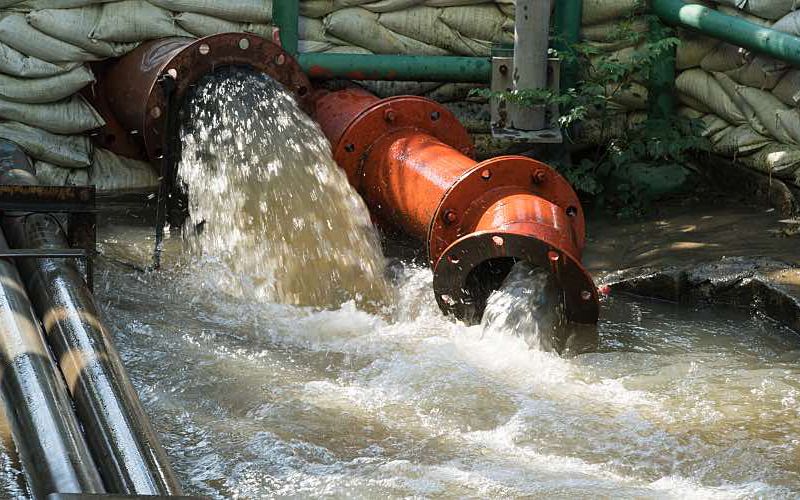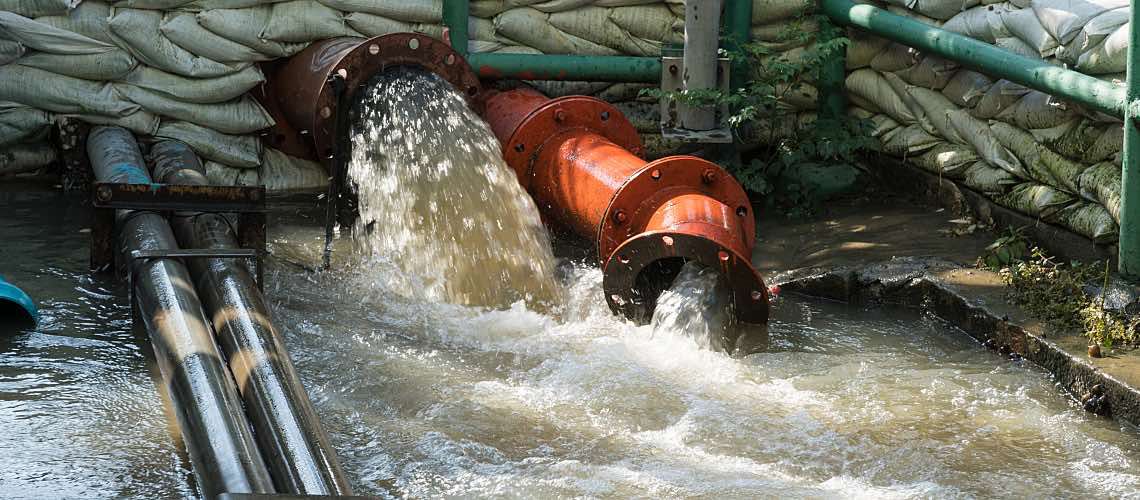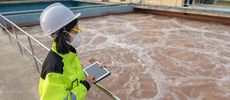Preparing for Floods at Drinking Water and Wastewater Utilities


Storms and floods cause the greatest economic losses of any weather-related disasters, according to the World Meteorological Organization, and climate change is expected to increase storm intensity and raise sea levels, exacerbating the situation.
The impacts on drinking water and wastewater utilities include facility and asset damage, power outages, and dangerous conditions for workers. So, how can water labs and utilities prepare for floods? The key is advanced planning. Here's what managers need to know.
Flood Resilience
Flood resilience means your staff and facilities survive flooding events, limit damage, and get back online as soon as possible.
Floods often cause extensive damage to water and wastewater utilities, according to the U.S. Environmental Protection Agency, which can include:
- Infrastructure damage that can interrupt service.
- Breaks in pipes that result in sewage spills and low water pressure.
- Water intakes blocked by debris.
- Combined sewer overflows.
- Quality issues with source water and treated effluents.
- Power outages and communication loss.
- Limited or no access to facilities and water testing capabilities.
The EPA offers an in-depth guide to help drinking and wastewater utilities manage these impacts. Flood Resilience: A Basic Guide for Water and Wastewater Utilities covers four key actions to take:
- Understand the threat of flooding.
- Identify vulnerable assets and determine consequences.
- Identify and evaluate mitigation measures.
- Develop a plan to implement mitigation measures.
The guide includes worksheets and videos especially helpful to prepare small- and mid-sized utilities for flooding.

Power Resilience
In only a few areas of the country—primarily the northeast and California—do electric utilities provide backup power when the grid goes down. Elsewhere, days or even weeks may pass until power is restored.
Before a disaster occurs, your team should document power requirements, order backup generators or ensure they're on standby, contact fuel vendors, and collaborate with your local power provider to get on the priority list for power restoration, generation, and fuel.
To minimize downtime, make sure you keep the following information current:
- How much power your facility needs along with the voltage requirements
- What size fixed or portable generators you'll need
- Where you should locate temporary generators
- Where you'll tie into power and who will make the connection
- What resources you'll need for both short- and long-term power outages
- How you can generate your own power on-site
The EPA offers Power Resilience: Guide for Water and Wastewater Utilities to help water systems build resilience and coordinate and communicate with electric and gas utilities.
Mitigation Measures
To protect assets, operations, and people, water and wastewater utilities and water labs must invest in mitigation measures. The benefit is preventing even higher expenses to deal with costly damage. Your facility may be eligible for federal disaster mitigation funds to pay for initiatives that keep your plant operating during and after disasters.
Actions you can take to mitigate impacts and ensure more reliable service include:
- Developing an emergency response plan and updating it annually.
- Placing barriers around crucial assets such as instrumentation and water intakes.
- Raising electrical equipment to prevent flooding.
- Moving emergency generators on-site or arranging for rapid delivery in an emergency.
- Bolting down chemical tanks.
Emergency Response Plan
The Emergency Response Plan is an essential mitigation measure. The EPA provides a template and instructions that describe strategies, resources, plans, and procedures you can implement. Creating a plan includes prioritizing customers who most need water services restored, such as hospitals and shelters, and identifying an emergency drinking water supply.
Also coordinate with the Water/Wastewater Agency Response Network (WARN) and your local Emergency Management Agency (EMA) to outline response activities. Prepare a series of standard news releases in advance to ensure clear and accurate information for customers and local media, especially if service is interrupted.
Incident Response
Planning ahead to minimize flooding impacts is essential, but you should also be ready to respond once a flood occurs. The EPA provides a series of "rip & run" checklists to help with emergency preparedness. The Flooding Incident Action Checklist explains how to prepare for, respond to, and recover from flooding. The list covers planning, coordination, and communication with customers; items for your facility and service area; and power, energy, and fuel.
In addition, a worksheet provides space to list critical contacts as well as additional resources to support incident response.
Prepare Now
It's not "if" but "when" a flood will impact your drinking water or wastewater facility, and lab managers need to be prepared. An event can happen almost without warning. To recover rapidly, build flood and power resilience and plan your response using the many resources available. Your employees and community will appreciate your efforts when the inevitable occurs.






